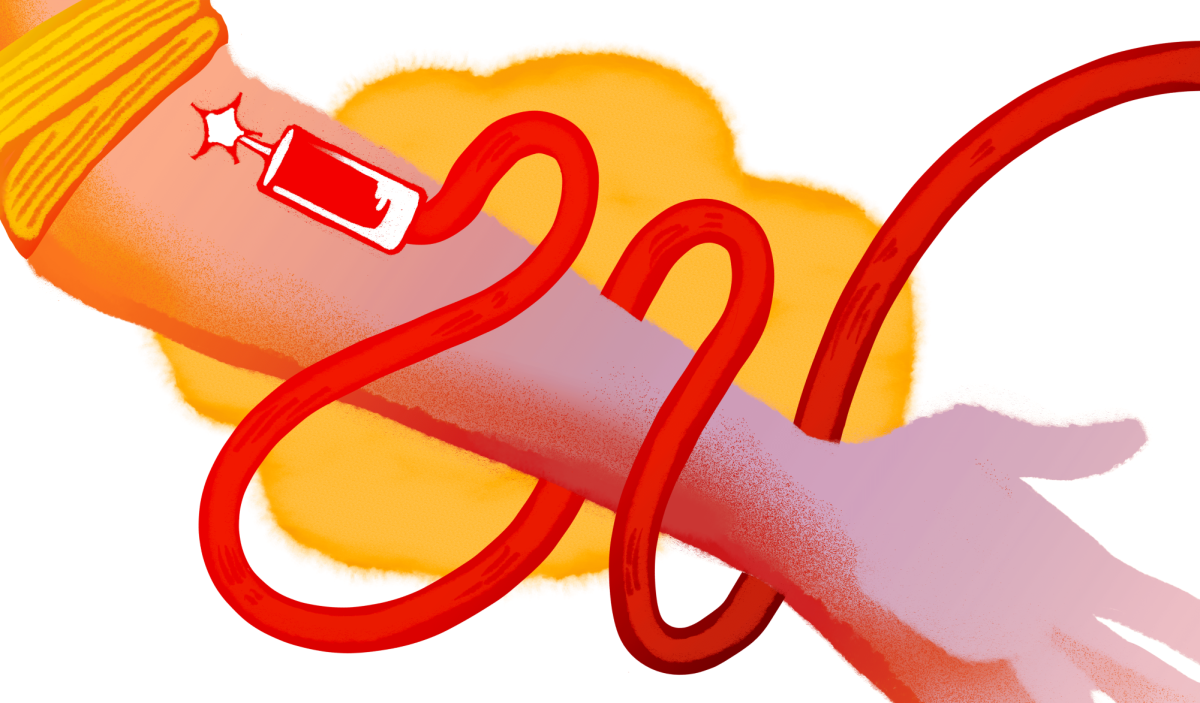Once a term, the Blood Drive Association at Oregon State University organizes and hosts a Red Cross Blood Drive. However, not everyone is eligible to donate blood.
Natalie Cheal, a fourth-year biology student and co-president of OSU’s BDA, said that the most common restriction that students encounter when donating blood is having a low hemoglobin level — in other words, low iron.
The American Red Cross website states that there are hemoglobin level restrictions to “ensure that the donor has adequate red blood cell levels to donate blood.”
For women above the age of 18 donating full blood, they must have a hemoglobin level of at least 12.5g/dl, while men must have a hemoglobin level of at least 13.0g/dl.
Not everyone chooses to donate full blood, and instead some choose to only donate the red blood cells, which is a donation called “Power Red.” This is because red blood cells are the “most frequently used blood component and are needed by almost every type of patient requiring transfusion,” according to the Red Cross website. Additionally, Cheal mentioned that Power Red donations allow donors to have their platelets and plasma returned after the red blood cells are taken.
For Power Red donations, both men and women must have a hemoglobin level of 13.3g/dl.
The hemoglobin levels can’t exceed 20g/dl, according to the American Red Cross website. A level that is too high “may indicate polycythemia or erythrocytosis.”
Another common restriction that Cheal mentioned is illness and travel restrictions. If someone has a cold or flu, they cannot donate until they are well. According to the Red Cross website, a person must be COVID-19 symptom free for the 10 days prior to their donation.
Cheal mentioned that there are some travel restrictions, particularly if a donor has recently visited a country known to have malaria. If you have recently traveled to a country with malaria, “you have to wait three months before you can donate.”
An interesting restriction deals with tattoos and piercings. Cheal said this is because not every state has the same safety regulations for tattoos and piercings; an unclean or unsafe environment can spread infections through tattoos and piercing needles, which then spreads to the blood. So, if you’ve gotten tattoos or piercing recently, you have to wait at least three months before donating blood.
The last restrictions that Cheal mentioned were height and weight restrictions for donors over the age of 18. The Red Cross website states that these height and weight restrictions exist because “blood volume is determined by body weight and height. Individuals with low blood volumes may not tolerate the removal of the required volume of blood given with whole blood donation.”
For full blood donations, donors must weigh over 110 pounds regardless of gender. For Power Red donations, there are even more restrictions.
Cheal said that female Power Red donors must be a height of at least 5’3” and at least 150 pounds. Males must be a height of at least 5’1” and at least 130 pounds.
Although there are common restrictions to donating blood, it is still important to donate if you are eligible to do so. “Every blood donation can save up to three lives. This is because it can be separated into its individual components and each of those individual components can be sent to someone else,” Cheal said.
If a person is ineligible to donate blood, they can volunteer and help out the American Red Cross workers at the blood drive.
















